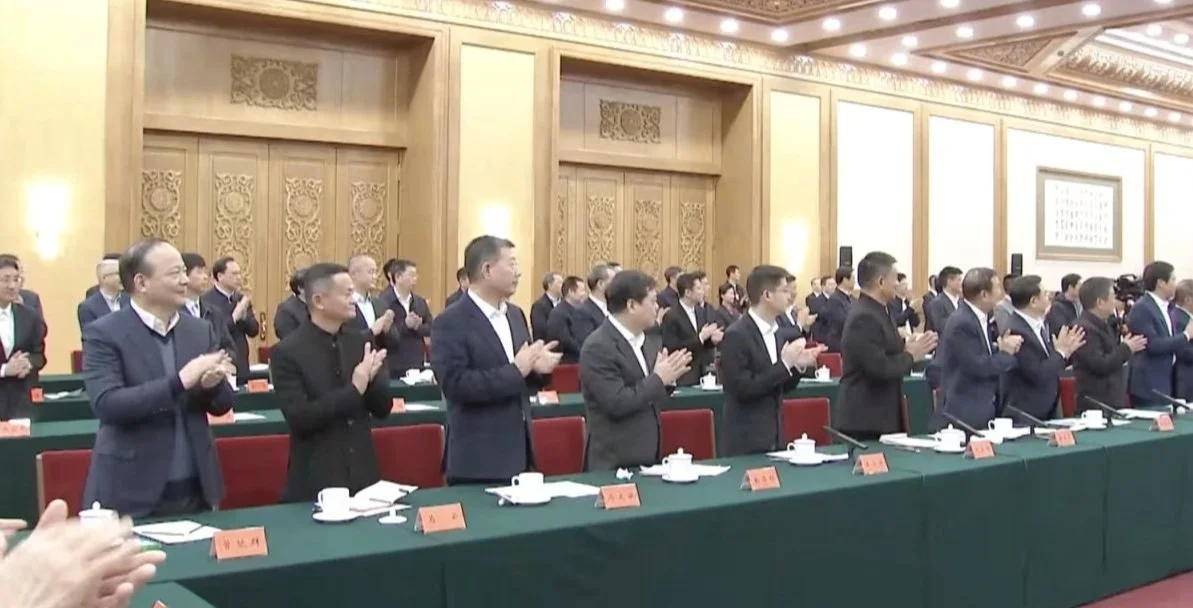China’s Technological Acceleration
China has started the year of the snake well, including some technological wins. The nation’s rapid technological advancement is reshaping the global landscape, challenging traditional power dynamics in many areas, including artificial intelligence (AI). With initiatives spanning AI breakthroughs, chip self-sufficiency, EVs, green energy and more, alongside a renewed government push for private sector growth, China is positioning itself as a formidable tech leader.
For many, the emergence of DeepSeek in particular came as a shock, however China’s command economy has been planning and preparing for innovation and success for a long time and is increasingly well-positioned to thwart any foreign economic pressure.
DeepSeek Rattles Western Dominance
DeepSeek rattles U.S. dominance in AI. Photo by Solen Feyissa on Unsplash
One of the most striking indicators of China’s technological acceleration is the emergence of DeepSeek, a large language model (LLM) that rivals leading U.S. AI systems such as OpenAI’s GPT-4. Notably, DeepSeek was developed for under $6 million—a fraction of the $100 million-plus cost of GPT-4—demonstrating China's ability to develop cutting-edge technology at a fraction of the cost.
Unlike its Western counterparts, DeepSeek is open-source, enabling developers globally to modify and integrate the technology freely. This move aligns with China’s broader strategy to foster AI self-reliance and global collaboration. The financial impact was immediate, with tech stocks suffering significant losses, notably Nvidia, which saw its market value drop by $600 billion.
While the immediate financial impact was profound, the long-term impact will be even greater. The open-source nature alone of DeepSeek means that users will get much more flexibility and utility from the system than its Western counterparts, meaning that they will find it very hard to hold on to market share with closed models.
Semiconductors: Where Does Taiwan Stand Now?
AI innovation to affect regional geopolitics. Photo by Lisanto 李奕良 on Unsplash
AI’s growth is heavily dependent on semiconductor advancements, an area where the U.S. has historically held a dominant position. China has long recognized the strategic importance of chips, investing over $150 billion since 2014 to build a self-sufficient semiconductor industry. The U.S. has implemented strict export controls on advanced chips to China, further fuelling Beijing’s drive to establish domestic capabilities.
Taiwan plays a crucial role in this dynamic, producing 68% of the world’s semiconductors and over 90% of high-end chips. China’s race to develop independent chip manufacturing reflects a broader push for technological sovereignty, ensuring long-term control over AI, cloud computing, and consumer electronics.
What this will do to Beijing’s future approach to Taiwan is anyone’s guess, however it is likely to heavily affect the nation’s clout on the global stage. While protecting democracy has always been the ostensible motive for countries supporting Taiwan, a reduced economic position may undermine sincere backing of the island’s independence.
U.S. Protectionism Leads to China Leap-Frogging
U.S. restrictions spur innovation in China. Photo by D koi on Unsplash
U.S. export controls on advanced semiconductors were designed to stifle China's technological advancements and maintain a competitive edge. However, these restrictions have resulted in the acceleration of China’s domestic innovation. With limited access to cutting-edge Western chips, Chinese AI firms have invested heavily in developing their own systems to circumvent hardware restrictions, leading to breakthroughs in efficiency and energy consumption.
By necessity, China has pushed forward in AI chip design, manufacturing processes, and alternative computing architectures. Companies such as Huawei and SMIC have made notable progress in creating high-performance chips despite U.S. sanctions. The restrictions, rather than halting progress, have reinforced China's determination to achieve self-sufficiency, making it a stronger competitor in the long run.
This naturally calls into question the efficacy of trade wars with a country like China whose size, resources and command economy mean it’s able to boost targeted production and innovation in a way that is unmatched by democratic counterparts. It also begs the question whether DeepSeek would have emerged open-sourced and at a fraction of the cost, had the US not imposed trade restrictions which were ultimately a catalyst for innovation.
Government Shift: A Business-Friendly China?
Xi meets tech bosses such as Jack Ma. Source: CNA
After years of regulatory crackdowns, China is signalling a more business-friendly environment. President Xi Jinping’s recent meeting with top tech executives, including Alibaba’s co-founder Jack Ma, suggests a strategic shift. Xi emphasized the private sector’s importance in driving innovation and economic growth, promising to remove market barriers and enhance fair competition.
This pivot comes amid economic slowdowns and geopolitical pressures, underscoring China’s recognition that a thriving private sector is essential for sustained growth. For foreign brands, this presents new opportunities to collaborate with Chinese firms and navigate a more predictable regulatory landscape.
This is China’s way of finding their preferred balance between unfettered private enterprise and its command economy. While the government won’t be giving up control over its centrally planned economy (which has driven its considerable development), there is a recognition that the private sector, both in terms of business and education, holds immense potential for innovation and development.
Education and Long-Term Innovation
Zhong Shanshan. Source: Forbes
This leads us to the boom in private universities in China where the ultra-wealthy are increasingly investing in educational institutions. Billionaires like Zhong Shanshan and Cao Dewang are pouring billions into private universities focused on scientific research and technology application. Last month, Zhong Shanshan raised eyebrows when he announced plans to spend ¥40 billion ($5.5b) over the next decade to set up a private university called Qiantang University.
This surge in education investment is welcomed by the government whose educational plan consists of cultivating top-tier talent in strategic fields. The relatively lenient government regulation on the private education industry and its profitability mean that wealthy entrepreneurs are incentivised to invest in education.
Such an investment into higher education will only increase China’s ability to create home-grown talent, forge a self-sufficient path and foster long-term innovation. This will also put it in a better position to weather any economic fallout geopolitical disputes tend to lead to, much in the same way US trade restrictions of semiconductors led to DeepSeek’s innovation.
Conclusion
China’s technological innovation is not only reshaping global markets but also proving resilient against external pressures. The country’s long-term vision is yielding cumulative results and with rapid advancements in AI, semiconductors, and education, the nation is on a clear trajectory toward greater self-sufficiency and innovation. The emergence of DeepSeek as an open-source alternative to Western AI models exemplifies China’s ability to develop world-class technology at a fraction of the cost. Meanwhile, U.S. semiconductor restrictions, intended to stifle Chinese progress, have instead fuelled domestic breakthroughs, reinforcing China’s long-term competitive edge.
This momentum is further supported by a shift in government policy, signalling a more business-friendly environment while maintaining strategic control over key industries. Additionally, the rise of private universities focused on scientific research will produce a new generation of highly skilled talent, ensuring sustained technological progress.
Far from being hindered by foreign economic pressure, China has leveraged restrictions as a catalyst for growth. Its capacity for rapid, large-scale mobilization—coupled with a clear long-term vision—ensures that its technological advancements will only accelerate. With the balance of power shifting, Western economies will have to re-evaluate their approach to China, so as not to undermine their own economic advantages.





